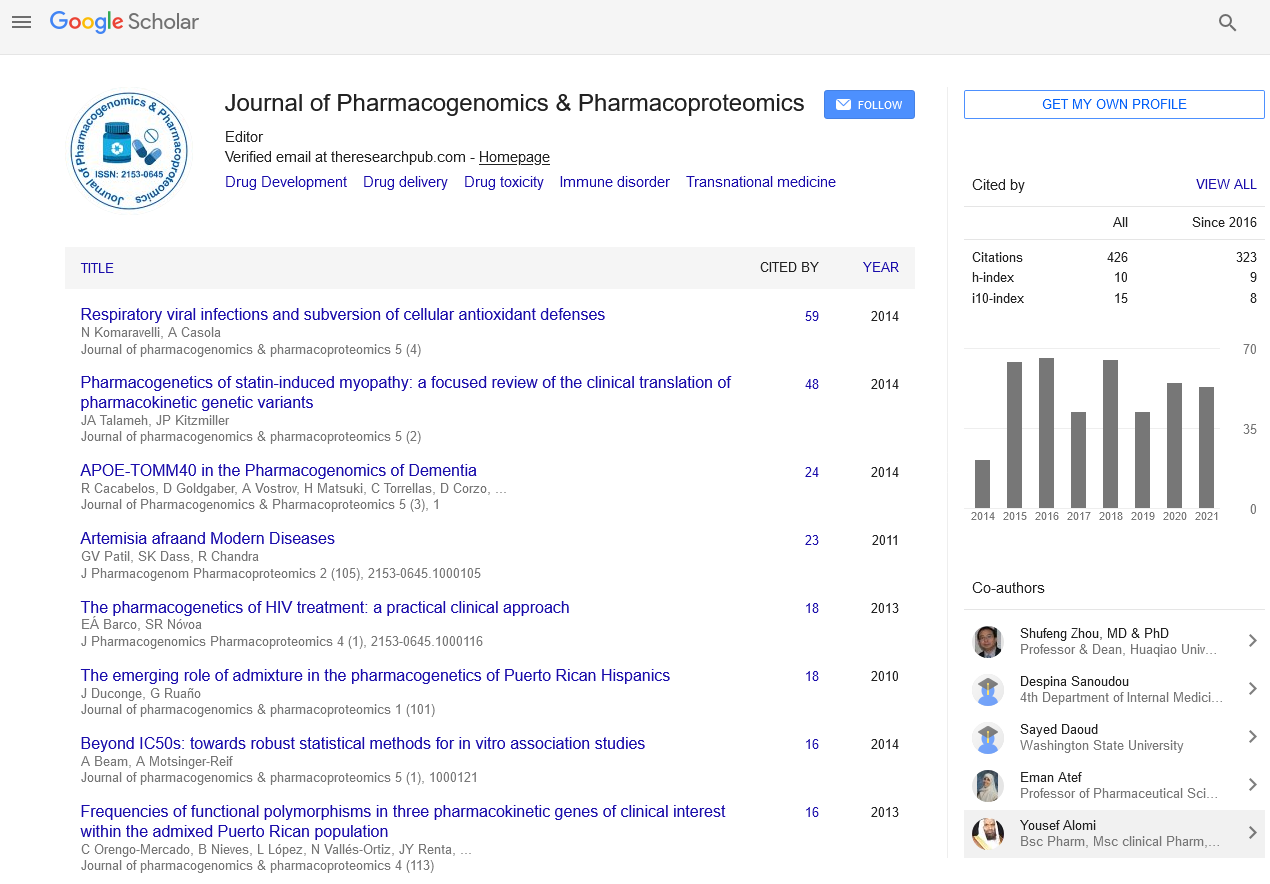Indexed In
- Open J Gate
- Genamics JournalSeek
- Academic Keys
- JournalTOCs
- ResearchBible
- Electronic Journals Library
- RefSeek
- Hamdard University
- EBSCO A-Z
- OCLC- WorldCat
- Proquest Summons
- SWB online catalog
- Virtual Library of Biology (vifabio)
- Publons
- MIAR
- Euro Pub
- Google Scholar
Useful Links
Share This Page
Journal Flyer

Open Access Journals
- Agri and Aquaculture
- Biochemistry
- Bioinformatics & Systems Biology
- Business & Management
- Chemistry
- Clinical Sciences
- Engineering
- Food & Nutrition
- General Science
- Genetics & Molecular Biology
- Immunology & Microbiology
- Medical Sciences
- Neuroscience & Psychology
- Nursing & Health Care
- Pharmaceutical Sciences
Acupuncture treatment for 18 cases of facial paralysis (Bells palsy)
5th International Conference on Predictive, Preventive and Personalized Medicine & Molecular Diagnostics
December 01-02, 2016 Valencia, Spain
Sukhwinder Singh
Guru Kirpa Acupuncture Health Centre, India
Scientific Tracks Abstracts: J Pharmacogenomics Pharmacoproteomics
Abstract:
Introduction & Aim: Bell�??s palsy or facial paralysis is characterized by weakness of the muscles supplied by the facial nerve, due to inflammation and swelling of the facial nerve within the facial route. It is most common in the persons who are over 30 years of age and in both sexes equally, though we got cases of young patients aged 22-27 years. Sudden onset of unilateral total or partial paralysis of the facial muscles, numbness on the affected side, loss of taste and excessive tear production on affected side are the signs and symptoms. In the present paper, 18 cases of facial paralysis were treated using acupuncture with perpendicular and point to point acupuncture. Treatment Methods: Acupuncture points selected were xiaguan (s-7), jiache (s-6), taiyang (extra), dicang (s-4), sibai (s-2), yifeng (tw-17), fengchi (gb-20), yangbai (gb-14), baihui (du-20), hegu (l.i.-11), yanglingquan (g.b.-34), zusanli (st-36) and neiting (s-44). Results: All the 18 cases of facial paralysis were treated using acupuncture with perpendicular and point to point acupuncture. Among them 11 cases were cured (61.11%) i.e., after treatment, symptoms and signs disappear completely, both sides of face are symmetric, and the sensory and motor functions recover completely, 6 cases showed marked effect (33.33%) i.e., symptoms and signs disappear, both sides of faces are symmetric, sensory and motor functions return but patient still feels numbness on affected side and 1 case showed improvement (5.55%) i.e., symptoms and signs almost disappear, but still evident when twitching the nose, inflating the cheeks or laughing, an effective rate of 100%. Conclusion: Based on the theory of traditional Chinese medicine, it is held that wind and cold of external origin which invades the channels traversing the face and disrupt the flow of Qi and blood, preventing the vessels and muscles from receiving the necessary nourishment. Treatment is directed towards spreading the Qi through the channels of the face.
Biography :
Sukhwinder Singh is an Acupuncture Therapist at Guru Kirpa Acupuncture Health Centre, Punjab, India. He has attended 15 national and international acupuncture conferences and presented acupuncture papers in 9 conferences.
Email: drsukhwinder@doctor.com


